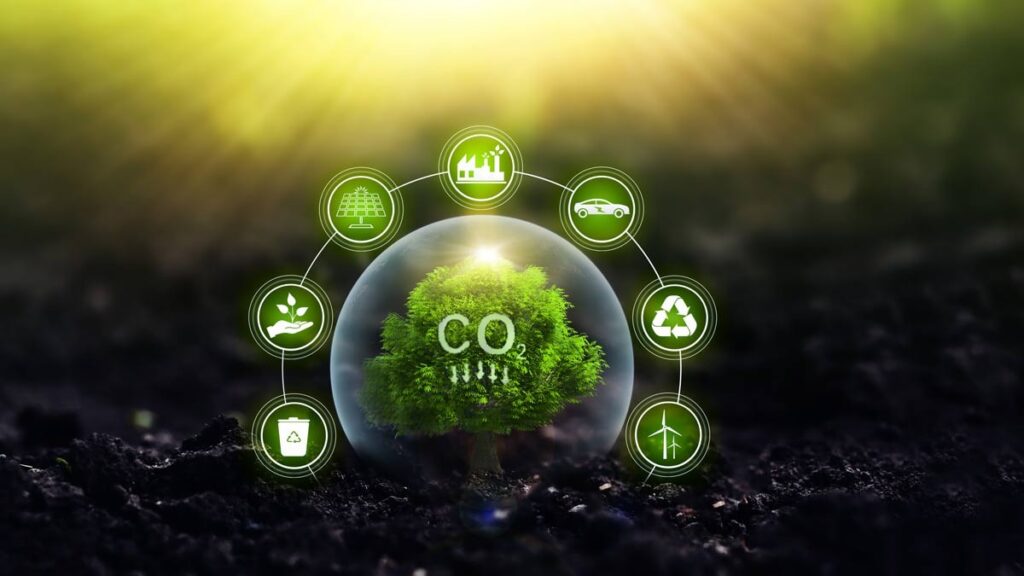Cảbon, a fundamental element, is crucial to the existence of life as we know it. As the backbone of organic chemistry, cabon forms the building blocks of life, making it indispensable for the structure and function of biomolecules. Understanding cabon’s essential role in life involves delving into its chemical properties, its involvement in biochemical processes, and its impact on the environment. This comprehensive exploration sheds light on why cabon is vital for life on Earth.
The Chemical Properties of Cảbon
Unique Atomic Structure
Cảbon unique atomic structure allows it to form a wide variety of complex molecules. With four valence electrons, cabon can form four covalent bonds with other atoms, creating a diversity of molecular structures ranging from simple hydrocarbons to complex macromolecules. This versatility is foundational to the complexity of biological systems.
Formation of Stable Bonds
Cảbon forms stable covalent bonds with other elements such as hydrogen, oxygen, nitrogen, and sulfur. These bonds are strong enough to maintain the integrity of molecules but also flexible enough to allow for dynamic biochemical interactions. The ability to form double and triple bonds adds to Cảbon’s versatility, enabling the formation of diverse organic compounds.
Cảbon’s Role in Biochemistry
Central to Organic Molecules
Organic molecules, which are essential to life, are based on carbon structures. Proteins, nucleic acids, carbohydrates, and lipids all contain carbon atoms arranged in various configurations. The car bon backbone of these molecules allows them to perform vital biological functions, from catalyzing chemical reactions to storing genetic information.
Cảbon in Energy Metabolism
Cảbon plays a critical role in energy metabolism. Carbohydrates and fats, which are primary sources of energy for living organisms, are composed of carbon-based molecules. Through metabolic pathways such as glycolysis and the citric acid cycle, car bon compounds are broken down to release energy stored in chemical bonds. This energy is then harnessed for cellular processes.
Carbon Cycle in Nature
Photosynthesis and Carbon Fixation
Photosynthesis is the process by which plants, algae, and certain bacteria convert carbon dioxide and water into glucose and oxygen, using the energy from sunlight. This process is fundamental to the carbon cycle, as it incorporates atmospheric carbon into organic matter, forming the basis of the food chain.
Respiration and Decomposition
Respiration is the process by which living organisms convert organic molecules back into car bon dioxide and water, releasing energy for cellular activities. Decomposition, carried out by bacteria and fungi, breaks down dead organic matter, returning carbon to the atmosphere and soil. These processes ensure the continuous cycling of car bon through ecosystems.
Cảbon in Earth’s Ecosystems
Cảbon Reservoirs
It is stored in various reservoirs, including the atmosphere, oceans, terrestrial biosphere, and geological formations. The Earth’s crust holds the largest reservoir, containing carbon in the form of fossil fuels and carbonate minerals These reservoirs interact through processes such as volcanic activity, weathering, and sedimentation.
Human Impact on the Cabon Cycle
Human activities, particularly the burning of fossil fuels and deforestation, have significantly altered the carbon cycle. The increase in atmospheric carbon dioxide levels contributes to global warming and climate change, impacting ecosystems and biodiversity. Understanding car bon’s role in these processes is crucial for developing strategies to mitigate environmental impacts.
The Significance of Cabon in Evolution
Origin of LifeScientists believe that car bon’s ability to form complex molecules played a key role in the origin of life. Organic molecules necessary for life, such as amino acids and nucleotides, could have formed under prebiotic conditions on early Earth. These molecules eventually led to the development of self-replicating systems and the evolution of living organisms.
Diversity of Life Forms
The versatility of car bon compounds has enabled the evolution of a vast diversity of life forms. Different configurations of car bon-based molecules have given rise to the wide array of proteins, nucleic acids, and other biomolecules that define the structure and function of living organisms. This molecular diversity underpins the complexity of life.
Car bon-Based Technologies
Organic Chemistry and Biotechnology
The study of organic chemistry, which focuses on cabon-containing compounds, has led to significant advances in biotechnology. Techniques such as genetic engineering and synthetic biology rely on manipulating car bon-based molecules to develop new medical treatments, agricultural products, and industrial processes.
Cabon Nanomaterials
Advances in nanotechnology have led to the development of cabon nanomaterials, such as graphene and car bon nanotubes. These materials have unique properties, including high strength, electrical conductivity, and thermal stability, making them valuable in various applications, from electronics to medicine.
Carbon’s Role in Climate Regulation
Greenhouse Effect
Car bon dioxide, a greenhouse gas, plays a crucial role in regulating Earth’s climate. The greenhouse effect, driven by carbon dioxide and other greenhouse gases, helps maintain the planet’s temperature within a range suitable for life. However, excess carbon dioxide from human activities enhances this effect, leading to global warming.
Carbon Sequestration
Efforts to mitigate climate change include strategies for car bon sequestration, which involve capturing and storing atmospheric carbon dioxide. Natural methods, such as reforestation and soil management, and technological solutions, such as carbon capture and storage (CCS), are being explored to reduce car bon levels in the atmosphere.
Conclusion
Car bon is undeniably essential to life, playing a crucial role in the structure and function of biological molecules, energy metabolism, and ecological balance. Its unique chemical properties enable the formation of diverse organic compounds, underpinning the complexity of life. Understanding car bon’s role in natural processes and human impacts on the carbon cycle is vital for addressing environmental challenges and advancing technological innovations. As we continue to explore and harness the potential of car bon, its significance in the biological and ecological realms remains profound and far-reaching.
FAQs
What is the role of carbon in organic molecules?
Car bon forms the backbone of organic molecules, allowing for the formation of complex structures necessary for biological functions. Its ability to form stable covalent bonds with other elements makes it integral to proteins, nucleic acids, carbohydrates, and lipids.
How does car bon contribute to energy metabolism?
Car bon-based molecules such as carbohydrates and fats are broken down through metabolic pathways to release energy. This energy is essential for cellular processes and overall organismal function.
What is the car bon cycle?
The car bon cycle is the continuous movement of carbon through the Earth’s atmosphere, oceans, terrestrial biosphere, and geological formations. Key processes include photosynthesis, respiration, decomposition, and carbon sequestration.
How do human activities impact the car bon cycle?
Human activities, especially the burning of fossil fuels and deforestation, increase atmospheric carbon dioxide levels. This contributes to global warming and climate change, affecting ecosystems and biodiversity.
What is the significance of car bon in the origin of life?
Car bon’s ability to form complex molecules under prebiotic conditions likely played a crucial role in the origin of life. Organic molecules essential for life, such as amino acids and nucleotides, are car bon-based.
What are car bon nanomaterials and their applications?
Car bon nanomaterials, such as graphene and car bon nanotubes, have unique properties like high strength and electrical conductivity. They are used in various applications, including electronics, medicine, and materials science.



